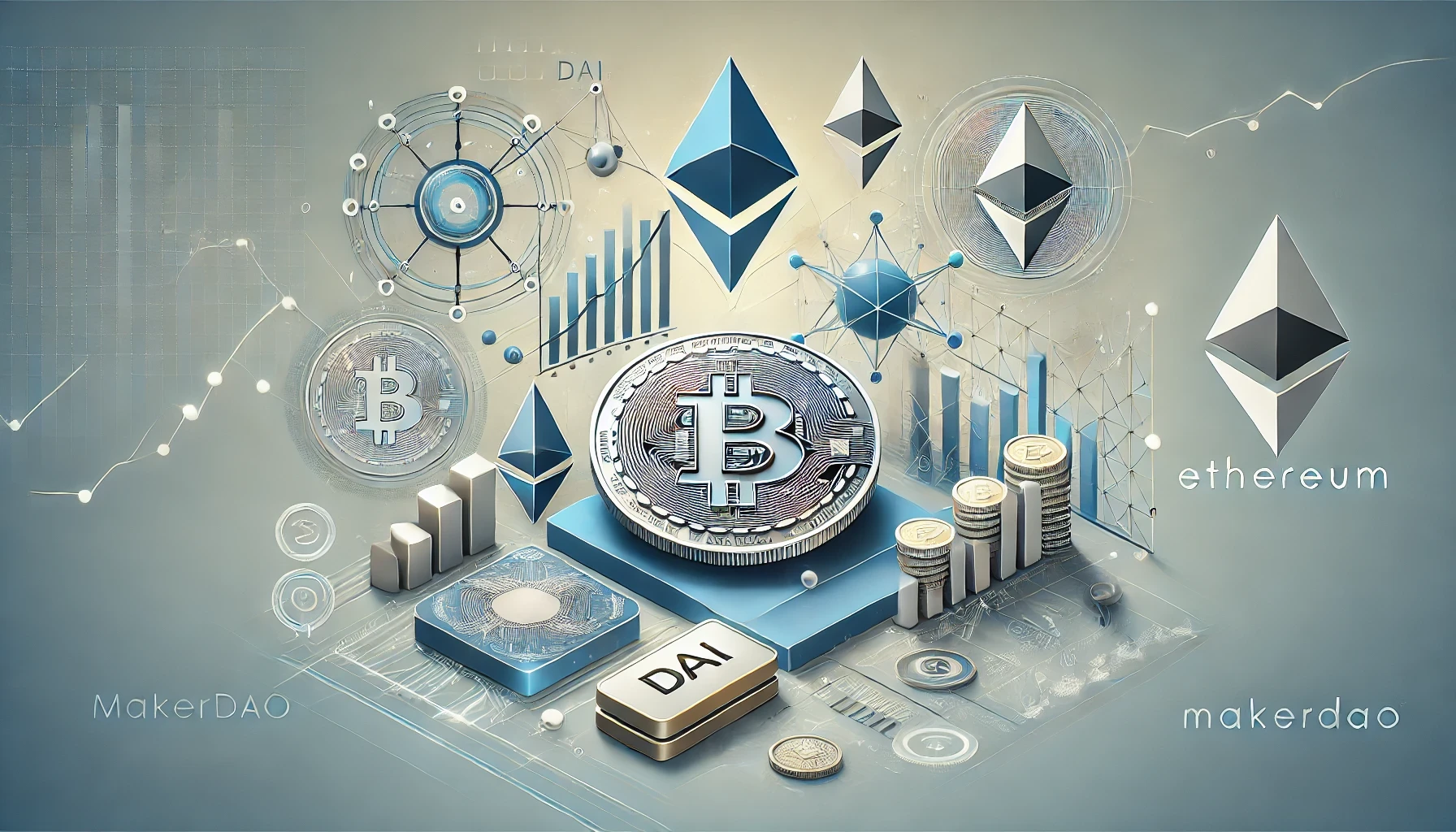What Is MakerDAO?
MakerDAO is a decentralized autonomous organization (DAO) built on the Ethereum blockchain. Founded in 2015 by Rune Christensen, its mission was simple: create a stable cryptocurrency that isn’t controlled by banks or governments. The result? DAI, a decentralized stablecoin backed by collateral, not cash reserves.
How DAI Works: Collateralization and Stability
DAI’s stability comes from overcollateralization. Here’s the process:
Lock Collateral: Users deposit crypto (e.g., ETH, WBTC) into a Maker Vault.
Generate DAI: They can mint DAI against their collateral (e.g., 150ETHlockedfor150ETHlockedfor100 DAI).
Maintain Stability: If the collateral’s value drops, users must add more or repay DAI to avoid liquidation.
This system ensures DAI stays pegged to $1, even during market chaos.
Why DAI Changed the Game
Decentralization: Unlike Tether (USDT) or USD Coin (USDC), DAI isn’t backed by cash in a bank. Its collateral is transparently stored on-chain.
Censorship-Resistant: No central authority can freeze DAI holdings.
DeFi Integration: DAI is the "go-to" stablecoin for lending, borrowing, and yield farming across platforms like Compound and Aave.
The Role of MKR Tokens
MakerDAO’s ecosystem includes MKR, a governance token. MKR holders:
Vote on protocol changes (e.g., collateral types, stability fees).
Act as a backstop: If the system faces a deficit, MKR is minted and sold to cover losses.
Challenges and Milestones
Black Thursday (2020): A market crash caused Ethereum network congestion, leading to undercollateralized vaults. MakerDAO resolved this by auctioning MKR tokens.
Multi-Collateral DAI: Initially backed only by ETH, DAI now accepts assets like USDC and WBTC, increasing flexibility.
Sustainability: Critics question whether overcollateralization is scalable long-term.
DAI’s Impact on DeFi
DAI is the backbone of decentralized finance:
Lending/Borrowing: Platforms like Maker and Aave use DAI for low-volatility transactions.
Global Access: Anyone with an internet connection can generate DAI, bypassing traditional banks.
Innovation: DAI inspired projects like Rai (reflexive stablecoins) and algorithmic stablecoins.
How to Use DAI
Earn Interest: Deposit DAI into DeFi platforms for yield (e.g., 5% APY on Compound).
Borrow Cheaply: Use DAI as collateral to borrow other assets.
Spend: Many crypto debit cards and merchants accept DAI.
The Future of MakerDAO
Real-World Assets (RWAs): MakerDAO now accepts collateral like real estate loans, bridging crypto and traditional finance.
Layer-2 Scaling: Moving to Ethereum’s Layer-2 networks (e.g., Optimism) for cheaper transactions.
Governance Evolution: Proposals to further decentralize decision-making.
Conclusion
MakerDAO and DAI proved that decentralized, trustless stablecoins are not just possible—they’re essential for a fairer financial system. By combining blockchain innovation with rigorous economic design, DAI has become a cornerstone of DeFi. Whether you’re a crypto veteran or a curious newcomer, understanding DAI is key to navigating the future of finance.
